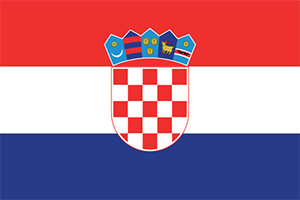Croatia - Country Background Information
- Describing the forms of education in the country
- Identifying an ‘inclusive setting’ in the country
- What an ‘official decision of SEN’ means in the country
- What ‘out-of-education’ means in the country
The EASIE data collection covers all recognised forms of education at ISCED levels 02, 1, 2 and 3.
This means any type of education organised by or approved by any recognised educational provider in the public or private sector: municipality, local or regional educational provider from the public or private sector, working with/for ministries responsible for education and areas such as health, social, welfare, labour, justice, etc.
Early Childhood Education and Care (ECEC) in the Republic of Croatia is not compulsory, except for the pre-school programme – a programme intended for children before starting primary school. This programme lasts one pedagogical year and is free for parents.
Primary education in Croatia (ISCED 1 and 2) is a single structure system of compulsory education lasting eight years. It starts at the age of 6–7 and ends at 14–15 (or up to 21 for learners with developmental disabilities).
What are the typical age ranges for the ISCED levels?
| ISCED LEVEL 02 | ISCED LEVEL 1 | ISCED LEVEL 2 | ISCED LEVEL 3 |
|---|---|---|---|
| 3-6 | 7-10 | 11-14 | 15-18 |
The entire pre-primary education, compulsory primary and secondary education are provided by public, private and church educational institutions, public schools and other educational institutions. By law, citizens can open private schools and learning centres.
Other institutions that implement programmes are: primary schools that have the approval of the competent ministry for that programme, centres for education, cultural institutions, associations, etc. Associations, libraries, cultural, health, social and sports institutions can implement pre-school education programmes only for a shorter duration of up to three hours a day (short programmes).
In the EASIE data collection, an inclusive setting is operationally defined as:
A recognised form of education where the child/learner follows education in mainstream classes alongside their peers for the largest part – 80% or more – of the school week.
The 80% time placement benchmark clearly indicates that a child/learner is educated in a mainstream class for the majority of their school week. At the same time, it acknowledges possibilities for small group or one-to-one withdrawal for limited periods of time (i.e. 20% or one day a week).
Very few participating countries can provide exact data on children/learners spending 80% of their time in a mainstream group/class. However, all countries can apply one of three agreed proxies that provide an approximation to this benchmark:
- Placement in a mainstream class implies over 80% or more
- Data is available on the number of hours of support allocated to a child/learner
- Placement in a mainstream class implies over 50% or more.
In the EASIE data collection, the agreed operational definition is:
An official decision leads to a child/learner being recognised as eligible for additional educational support to meet their learning needs.
Countries may have different types of official decision, but for all official decisions:
- There has been some form of educational assessment procedure involving different people. This procedure may involve the child/learner, parents, school-based team members, as well as professionals from multi-disciplinary teams from outside the child’s/learner’s (pre-)school.
- There is some form of legal document (plan/programme, etc.) that describes the support the child/learner is eligible to receive, which is used as the basis for decision-making.
- There is some form of regular review process of the child/learner’s needs, progress and support.
According to the Primary and Secondary School Education Act, the term ‘learner with special education needs (SEN)’ encompasses both gifted learners and learners with difficulties. According to the Guidelines for Working with Gifted Students and Children, the school’s team for gifted learners identifies gifted learners and organises additional work for them according to their preferences, abilities and interests within mainstream schools and classrooms. The team plans, organises, identifies, implements, monitors and evaluates systematic work with gifted learners and co-operates with their parents/guardians.
Within the EASIE data collection, specific questions examine children/learners who are out of education. This means children/learners who should, by law, be in some form of recognised education, but who are out of any form of recognised education. A recognised form of education is any type of education organised by or approved by any recognised educational provider in the public or private sector.
